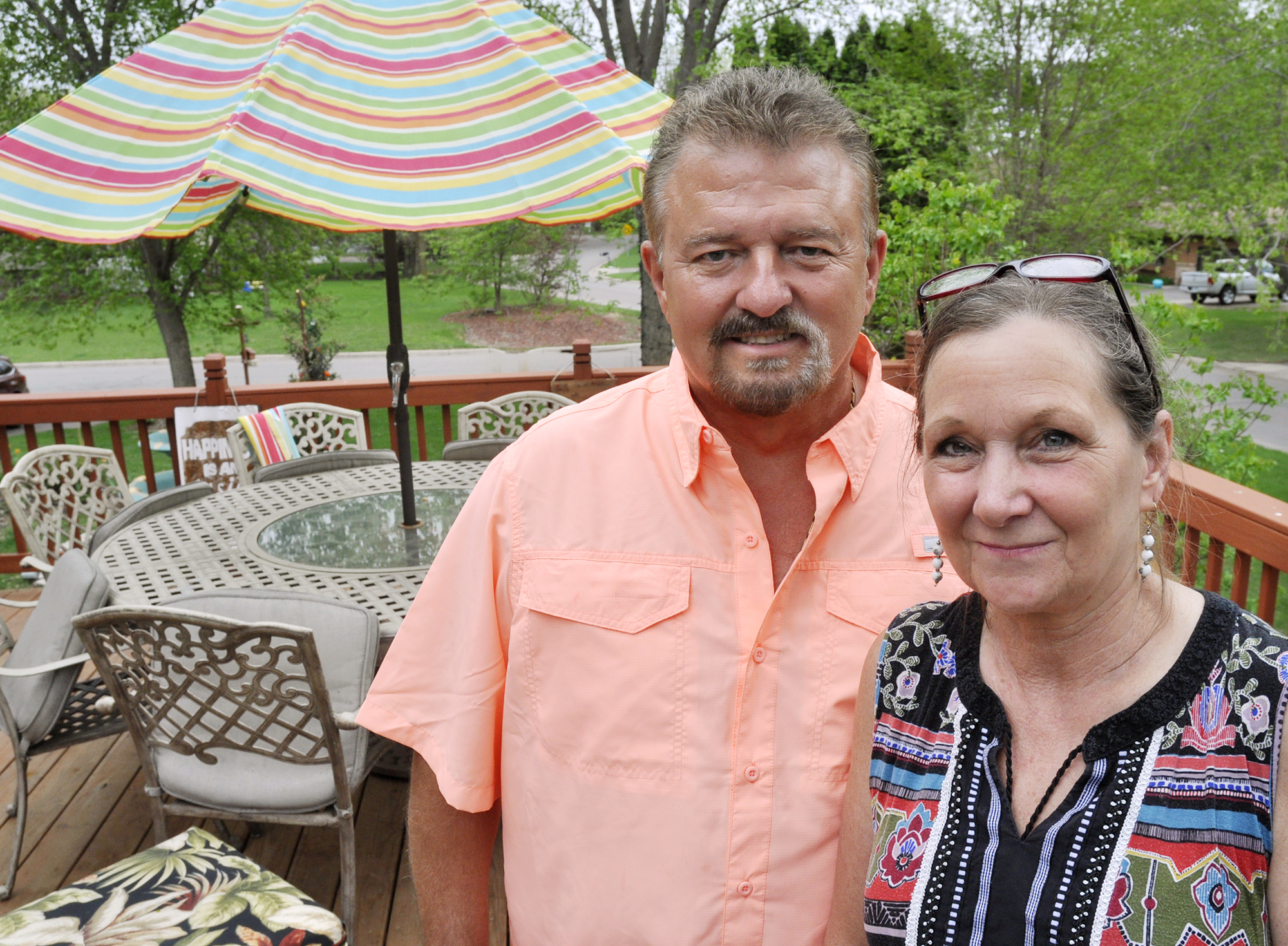by Darren Diekmann
news@thenewsleaders.com
Maple-syrup season wrapped up just a few weeks ago in the area, and for some producers the unusually cold and snowy spring made for a poor season — with yields well below average.
Others were at least partly saved by just one or two days of free-flowing sap in mid-April.
That was true of Shelly and Tom Carlson who work a 40-acre sugar bush, or sugar maple stand.
The operation is called Wildwood Ranch at Kraemer Lake-Wildwood County Park in Stearns County, off CR 51.
“At one point, this year,” Shelly Carlson said. “We never had more than 400 gallons of sap a day.” A low yield for their more than 1,500 taps and 40 acres for that time of the year.
The unseasonably cold weather did not allow for the usual period of below-freezing nights and warmer, above-freezing days. It’s a cycle that usually begins in March and ends in early to mid-April and that enables producers to collect sap from the tree during the afternoons as the thawing sap is drawn up the tree to the warming branches.
For the Carlsons it seemed like it would be a poor production year. That is until April 17.
“That Tuesday was our one big sap day right after the last big snow,” Carlson said. “Everything just let loose that day. We collected about 2,100 gallons of sap.
The cold may have reduced the amount of sap collected, but it helped increase the concentration of sugar in the sap. When it’s cold, the tree stores the sap in the roots longer, causing higher concentrations of sugar, Carlson said.
“We didn’t get as much sap, but the sugars were high.” We were averaging about 3.3 to 3.5 percent all season, those are just phenomenal numbers.”
This area in Minnesota typically averages about 3 percent sugar in the sap coming out of the tap, compared with Vermont and other areas that typically average about 2 percent.
The high sugar content helped the Carlsons end up with a respectable 340 gallons of syrup — not a bad year.
“We were hoping for about 500 gallons with all the taps we had out,” Carlson said.
Making money from maple syrup is a small part of the Carlsons’ interest in it. Shelly says it’s a family tradition and a hobby out of control.
It connects her to her father who started the venture, and to her husband, who during the season, takes time off from his veterinarian practice to work by her side. Her kids help out and her brother contributes with his own nearby maple stand.
Carlson’s father, Wally Honer, began thinking about making maple syrup when he owned a hobby farm raising Morgan horses.
“It started when a forester in the mid-1960s told him he had a fabulous stand of maples — a great sugar bush for making maple syrup. That is what sparked his interest.”
It was certainly in her father’s character to try something like this.
“He was always the kind of guy who liked to harvest from his land,” she said. “He picked berries in the woods and he grew shiitake mushrooms for a while.”
However, no maples were tapped until the 1970s, when Fred, one of Carlson’s brothers came back from homesteading in Alaska and started tapping and making a small amount of maple syrup.
That was the spark her father needed. With help from family, Honer tapped about a hundred trees and built a little shelter (a sugar shack) in the woods for the cooking.
Honer expanded his operation in the mid-1980s. He took extension classes on the subject that led him to install vacuum tubing and an evaporator.
Honer continued to make syrup until his death in 1999.
“My husband and I were out for a walk in June later that year and noticed all the trees were still tapped,” she said. “He had passed away in March during the maple season, but no one had taken it upon themselves to finish it up.”
So the Carlsons cleaned up and prepared for next season “We kind of took over and started making improvements in the next years.”
The improvements took several years and included adding more tanks for sap storage, installing all new tubing, replacing the old evaporator with a larger one, and just last year purchasing a reverse-osmosis machine.
Now the Carlsons tap about 1,500 trees on the original 40 acres and 300 on a nearby stand owned by Fred. They now average 500 gallons of syrup a year.
“It has taken a while but now we have a pretty nice set-up.”
In 2007, the family sold the 40-acre stand of maples to the park under a contract that would allow them to continue tapping trees and making maple syrup.
“We wanted to continue with making maple syrup,” she said. “It had become a family tradition and now it is a fixture of the park.”

Shelly Carlson performs the continuous task of checking the network of tap lines that collect the sap at Wildwood Ranch.




